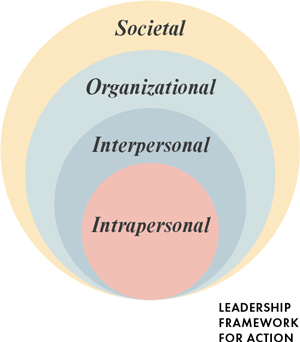By Dr. Artika R. Tyner & Olivia Liz-Fonts
 The racial reckoning of recent years has ushered in a critical examination of organizational structures, cultures, and policies. Corporate boards have been re-aligned to create access to leadership roles for women and people of color. McKinsey reports that $200 billion has been committed to racial equity efforts since the murder of George Floyd. New philanthropic efforts have focused on community revitalization and economic development. Yet there have been only incremental gains in promoting diversity, equity, and inclusion within corporate settings.
The racial reckoning of recent years has ushered in a critical examination of organizational structures, cultures, and policies. Corporate boards have been re-aligned to create access to leadership roles for women and people of color. McKinsey reports that $200 billion has been committed to racial equity efforts since the murder of George Floyd. New philanthropic efforts have focused on community revitalization and economic development. Yet there have been only incremental gains in promoting diversity, equity, and inclusion within corporate settings.
Building an inclusive workplace
Women of color are still waiting to realize the promise of ladders to success and windows of opportunity. Currently women of color make up 17 percent of corporate entry-level positions, yet only 4 percent are represented at the c-suite level.1 The same study also revealed that white men make up 35 percent of corporate entry-level positions and 62 percent of c-suite positions.2 This significant difference in representation is the result of passive DEI initiatives.
The issue of diversity in the workplace has been around since the 1960s as a result of the antidiscrimination legislation of that decade. The initial focus centered on fair hiring practices and affirmative action. But the concept of diversity has evolved over the years to encompass “inclusion,” “equity,” and “justice.” The idea of inclusion focuses on creating an environment in which employees feel supported and valued. It is a place where leaders cultivate human talent and potential. Caroline Wanga, CEO of Essence Communications, shares, “Be the place that puts the best of talent out in the world.”
In turn, this creates an atmosphere where everyone can thrive and unveil their limitless potential. Equity has been tied to diversity efforts that address the gaps in equality. This is acknowledging that each person has a different set of life circumstances that limit access to resources and opportunities. A commitment to equity focuses on how to create equal outcomes through resource allocation and intentional action. Justice focuses on dismantling systemic barriers and historical exclusionary practices. It not only shifts mindsets but also transforms policies and practices while removing roadblocks and impasses.
The shift in focus to incorporate inclusion and equity was driven in part by the invisible barriers that women and other minority groups face. Though organizations have implemented anti-discrimination policies and pipeline initiatives, women and minorities continue to face invisible barriers at various points in their careers. The “glass ceiling,” “glass cliff,” and “broken rung” are metaphors developed to conceptualize the different points at which women and minorities face barriers that contribute to their underrepresentation in corporate leadership positions.
Though most organizations recognize the presence of these barriers, few have been successful in eliminating them. The approach tends to be limited in scope and to lack coordination and accountability measures—thus failing to address the systemic nature of inequities. One organization may host unconscious bias training (addressing the intrapersonal level) while another may conduct a racial equity assessment (exploring organizational culture). Organizations also show their commitment to diversity by implementing anti-discrimination policies. However, these strategies are
one-dimensional and tend to yield minimal results. Instead, organizations must also engage senior leaders to promote inclusion and professional advancement for women of color. This is a call to inclusive leadership.
 Inclusive leadership
Inclusive leadership
The Leadership Framework for Action developed by Dr. Artika Tyner provides a comprehensive approach for building the essential leadership competencies rooted in the principles of DEI, which manifests in healthy workplace relations, peak optimized performance, positive morale, and betterment of society. It provides four stages of learning: intrapersonal (engaging in self-discovery), interpersonal (building an authentic relationship with others), organizational (establishing strategic outcomes and promoting equity), and societal (developing sustainable, durable solutions).
This article focuses on leadership strategies for advancing change at the interpersonal and organizational levels.
Taking action
An employee’s sense of inclusion considers the daily interactions experienced in the workplace. Among those interactions is access to leaders by way of informal exchanges and sponsorship. Sponsorship differs from mentorship in that it entails external-facing support such as advocacy, visibility, promotion, and professional connections. Employees who have at least one sponsor are 1.6 times more likely than others to feel included.3 The external-facing support that sponsorship provides makes it more likely for an employee to access senior leaders. One 2018 study found that employees with sponsors are 1.4 times more likely to say they have had a meaningful interaction with a senior leader.4
The same study found that 60 percent of Black women reported they never had an informal interaction with a senior leader, while only 40 percent of all men reported such a response.5
Although sponsorship can be rare, with only one of four employees having had a sponsor, access to leaders through formal or informal interactions can also create opportunities.6 Additionally, access to leaders is among the factors that contribute to an employee’s sense of inclusion as employees recognize that exposure to leadership is beneficial to their career advancement.7
Sponsorship programs can be a tool for organizations to support employees with networking and career advancement opportunities. However, it is important for organizations to be more strategic with sponsorship to support women of color in the workplace. Although studies suggest that diverse leaders create a sense of inclusion, organizations often make the mistake of relying on diverse leaders to take on various diversity initiatives, such as sponsorship. Instead, organizations should focus on their leadership as a whole to develop strategies for allyship.
With the majority of leadership positions consisting of men, organizations need to engage with male leaders to nurture an inclusive environment that supports the career advancement of women of color.8 In creating a strategy, organizations need to consider how individuals interpret “allyship” and the action that is required to support women of color in the workplace. Unfortunately, there is a notable disconnect between the allyship actions that women of color say are most meaningful and the actions that white men prioritize. While women of color value advocacy for new opportunities, white men consider the most meaningful allyship action to be the ability to confront discrimination against women of color.9 This disconnect demonstrates the misconception that racial allyship and professional support are mutually exclusive.
While it is important for leadership to advocate for an inclusive workplace by addressing discrimination against women of color, it is arguably more important to advocate for women of color by supporting them in reaching professional milestones—as this would also imply an inclusive and equitable working environment.
In addition to the opportunities for sponsorship and allyship, inclusive leaders can support women of color in other ways.
• Focus on addressing pay parity. Access to equal pay is a persistent challenge for women generally. Once gender and race are analyzed together, however, the results are even more alarming. For African American women to achieve equal pay, they would need to work until August 7 (Black Women’s Equal Pay Day) of the following year to catch up with white men. This is because, on average, Black women are paid 38 percent less than white men and 21 percent less than white women. Latina Equal Pay Day is November 1. This date reflects the 46 percent pay gap Latinas face.
• Develop mentorship programs for women of color. Informal and formal mentorship opportunities will provide women with the key tools and professional training for career advancement. This should include career development resources and corporate board opportunities provided by programs like HOPE Corporate Inclusion Project. This process should also be accompanied by efforts to cultivate relationships with champions and sponsors.
Organizations can reap the benefits of an inclusive workplace by implementing strategies they can measure, track, and adjust over time. This ultimately leads to a more profitable and successful organization. This process centers on the core inclusivity values of belongingness, team cohesion, and equitable outcomes.
Bayard Rustin encouraged each of us to take intentional action for justice and equity when he stated, “the proof one truly believes is in action.” The time is now to take action to build an inclusive workplace, not just for women of color but for everyone to reap the benefits derived from inclusion, equity, and justice. Broken ladders and shattered glass windows will be replaced with ladders to success and windows of opportunity.
 Dr. Artika R. Tyner is a passionate educator, author, sought-after speaker, and advocate for justice. Dr. Tyner is a law professor at the University of St. Thomas School of Law. She is committed to training students to serve as social engineers who create new inroads to justice and freedom.
Dr. Artika R. Tyner is a passionate educator, author, sought-after speaker, and advocate for justice. Dr. Tyner is a law professor at the University of St. Thomas School of Law. She is committed to training students to serve as social engineers who create new inroads to justice and freedom.

Olivia Liz-Fonts is currently a third-year student at the University of St. Thomas School of Law. With a background in human resources, Olivia hopes to leverage her legal career to create policies and practices that promote equitable workplace advancement.
Notes
1 Tiffany Burns, Jess Huang, Alexis Krivkovich, Lareina Yee, Ishanaa Rambachan, Tijana Trkulja, Women in the Workplace 2021 (McKinsey & Co.), 9/27/2021. https://www.mckinsey.com/featured-insights/diversity-and-inclusion/women-in-the-workplace#nga_section_header_main_0_universal_5.
2 Women in the Workplace 2021, McKinsey & Co., supra note 1.
3 Peter Bailinson, William Decherd, Diana Ellsworth, Maital Guttman, Understanding Organizational Barriers to a more Inclusive Workplace, (Mckinsey & Co.), 6/28/2021, https://www.mckinsey.com/business-functions/people-and-organizational-performance/our-insights/understanding-organizational-barriers-to-a-more-inclusive-workplace.
4 Rachel Thomas, Marianne Cooper, Ellen Konar, Megan Rooney, Mary Noble-Tolla, Ali Bohrer, Lareina Yee, Alexis Krivkovich, Irina Starkova, Kelsey Robinson, Marie Claude Nadeau, Nicole Robinson, Women in the Workplace 2018 (McKinsey & Co.), https://wiw-report.s3.amazonaws.com/Women_in_the_Workplace_2018.pdf (last visited 4/28/2022). [hereinafter Women in the Workplace 2018, McKinsey & Co.]. The study was conducted across 270 organization employing more than 13 million people.
5 Women in the Workplace 2018, McKinsey & Co., supra note 4.
6 Women in the Workplace 2018, McKinsey & Co., supra note 4.
7 Women in the Workplace 2018, McKinsey & Co., supra note 4.
8 The 2021 Women in the Workplace study reported that men hold 65% of senior manager/director, 69% of vice president, 73% of senior vice president, and 75% of c-suite positions; while women of color hold 9% of senior manager/director, 7%, of vice president, 5% of senior vice president, and 4% of c-suite level positions.
9 Women in the Workplace 2018, McKinsey & Co., supra note 4.